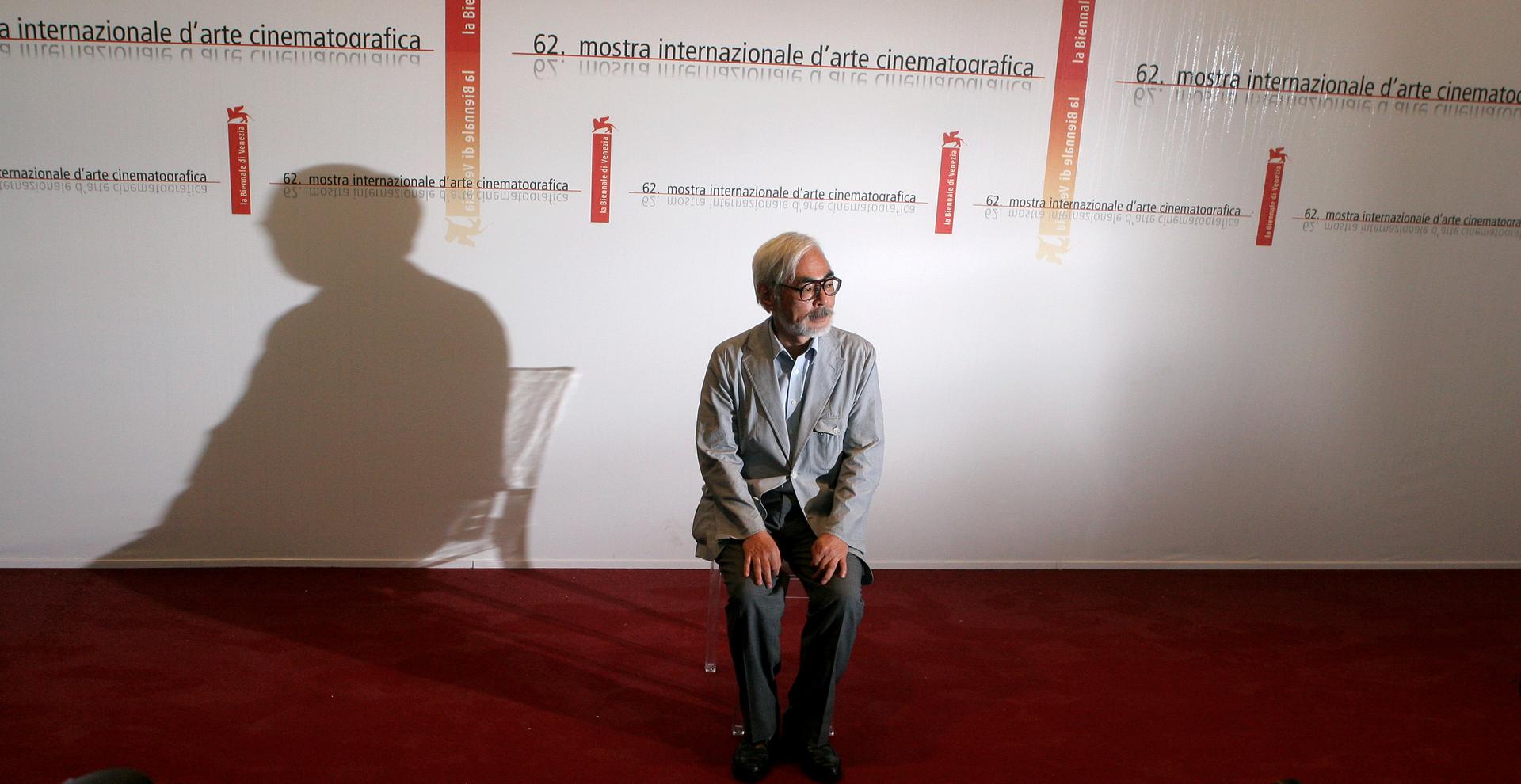Anime’s other-world director plants his final film in reality
Japanese director Hayao Miyazaki attends a photocall in Venice September 9, 2005. Miyazaki is at the Venice film festival to receive the Golden Lion award for lifetime achievement.
Fans of Japanese animation, or anime, are preparing for withdrawal. The famed director Hayao Miyazaki is retiring.
His last feature, “The Wind Rises,” opened Friday — for one week only — in Los Angeles and New York City. Just enough time to get in the Oscar chase. Miyazaki’s made a career out of producing other-worldly films.
But this one is grounded on Earth.
The trailer for Hayao Miyazaki’s last film starts innocuously enough … with a poem:
Who has seen the wind?
Neither I nor you.
But when the leaves hang trembling, the wind is passing through.
Let the wind carry … these wings to you.
That’s our entry point to Miyazaki’s fictionalized story of the aeronautical engineer Jiro Horikoshi. He’s the man who created the Mitsubishi A6M Zero. It’s a Japanese airplane built in the 1940s. It was lightweight, maneuverable and could fly, it seemed, forever.
But Brian Ashcraft of Osaka, Japan, says there was a problem with the plane.
“This plane in particular, it was an amazing aircraft but it was used to do horrible things,” he said.
Ashcraft writes for the website Kotaku. He says this plane became notorious for its participation in the bombing Pearl Harbor and for shooting Allied planes out of the sky during World War II. But despite the movie's focus on this plane … it really isn't about war. It's about a man pursuing his dream: creating the perfect airplane.
Miyazaki also wrote it as a cautionary tale about the pursuit of dreams. He's been quoted as saying that "yearning for something too beautiful can ruin you. Swaying toward beauty may come at a price."
That's ironic for a man who's spent his life creating fantastic worlds. The movie opened in Japan last summer and has already raked in tens of millions of dollars. That said, not everyone has taken to it.
Ashcraft has been writing about the reaction to the film. He says it's stirred plenty of online controversy.
“I think the imagery and what this plane came to represent, it might be a bridge too far for some,” he said.
In Japan, some people called Miyazaki a traitor — and anti-Japanese.
In South Korea, some criticized the film as glorifying Japanese imperialism.
Some of the conflicting complaints may be due to Miyazki's storytelling style. Idiosyncratic is a word that critics often use to describe his work, and that of his production house, Studio Ghibli.
And yet “Studio Ghibli movies are what kids grow up on," Ashcraft said. "When kids are really small, this is what they watch. And it’s become really entrenched in the culture.”
Miyazaki also has his fans abroad. People like Susan Napier, a professor of Japanese Studies at Tufts University. She's writing a book about Miyazaki. Her first Miyazaki moment was watching one of his early films, "Nausicaa of the Valley of the Wind."
"I remember just thinking, I am seeing something so new, so original, so imaginative and so darned beautiful," she said.
Napier says she cried at the end of his newest movie "The Wind Rises." Partly, because she knows it's his last.
"Personally, as a fan and as someone who has been touched and moved by so many of his works it's very … it's a huge loss because he is absolutely unique. There is no one like him.”
And that’s why Brian Ashcraft finds it so interesting to see Miyazaki tackle a loaded subject matter in his last film.
“It's fascinating to see a director who is in his early 70s still have something to say and not go out quietly,” he says.
We can hope he finds retirement a bore.
We want to hear your feedback so we can keep improving our website, theworld.org. Please fill out this quick survey and let us know your thoughts (your answers will be anonymous). Thanks for your time!
